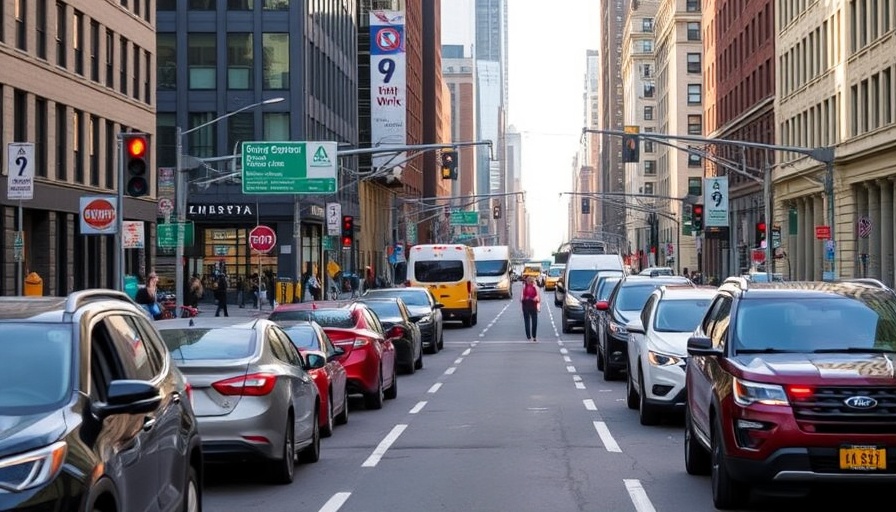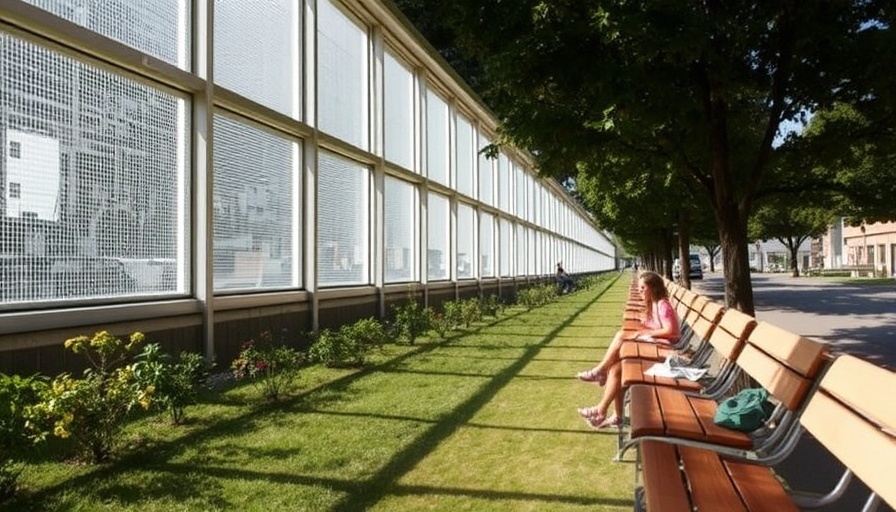
New York City Takes a Bold Step Towards Sustainability
New York City has joined a select group of global cities, implementing congestion pricing designed to alleviate traffic and cut carbon emissions. With this initiative, which charges a fee for cars entering the most congested areas, New York hopes to tackle pollution head-on, just as cities like London and Stockholm have done.
Significant Environmental Impact in Just Six Months
Since the launch of the congestion pricing in January 2025, the positive effects have become evident. The city has reported a staggering 25% reduction in traffic delays within the charging zone. Additionally, about 2 million fewer cars now enter the streets previously plagued by gridlock.
As traffic speeds have picked up by 15%, there has been a notable decrease in accidents and injuries, leading to safer streets. Air quality measurements show a 2.5% reduction in carbon pollution, significantly improving the health of New Yorkers. According to Ben Furnas, executive director of Transportation Alternatives, the results have surpassed the expectations of even the strongest advocates. “It's incredible to see the tangible improvements,” he stated.
Resistance and Political Challenges
Despite these successes, the congestion pricing initiative faces fierce opposition. Former President Donald Trump has vocally criticized the scheme, declaring efforts to dismantle it, branding himself as a 'king' in a recent social media post. His comments reflect a more significant challenge in the political landscape, where environmental advancements often encounter resistance.
Governor Kathy Hochul initially delayed the plan, highlighting a contentious political battle. The final charge per crossing was reduced from $15 to $9 to address cost-of-living concerns, showing the delicate balance policymakers must strike.
Future Implications: Can the Model be Replicatd?
As New York City experiences a transformation, there’s a growing conversation about whether other cities can adopt similar models. Cities across the U.S. currently grapple with rising congestion levels and deteriorating air quality. If New York's results hold steady, frustration with traffic might prompt municipalities to evaluate congestion pricing as a viable solution.
Michael Schneider, a transportation analyst, suggests that “the successes of New York’s congestion pricing might ignite a movement” in other urban areas desperate for clarity in car traffic and cleaner air. Within six months, New York’s measures have already shown that urban cities can make impactful strides towards sustainability and public health.
What Homebuyers Should Consider in a Shifting Landscape
For homebuyers, sellers, and property investors in Dumfries, these changes in metropolitan policy may influence property values and residential desirability. Cleaner air and improved traffic access can significantly enhance neighborhood appeal.
Investors looking to buy into urban properties may find areas near the congestion charge zones increasingly attractive, as local economies and community infrastructure enhance alongside environmental policies. Properties that promote and leverage sustainability could see their values rise as more individuals prioritize eco-friendliness.
Act Now: The Future of Urban Living Depends on You
As New Yorkers embrace their changing traffic landscape, it’s essential for investors and future homeowners to stay informed about these policies and trends. With sustainability beginning to define city living, now is the time to consider how these factors may impact your investment and home choices. By prioritizing properties that promote sustainability, you're not just investing in real estate; you’re investing in the future of urban living.
 Add Row
Add Row  Add
Add 





Write A Comment